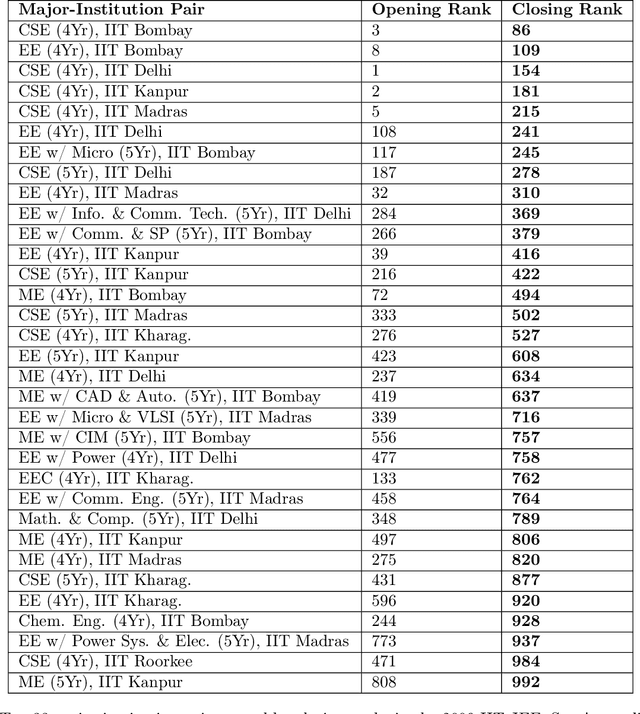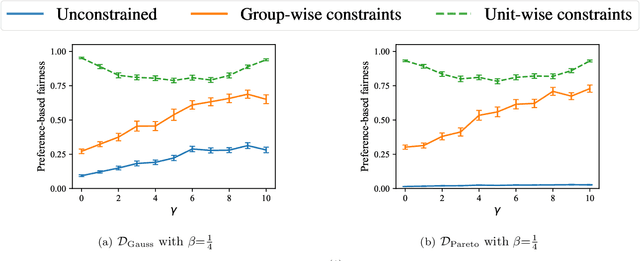Amit Kumar
Haptic-based Complementary Filter for Rigid Body Rotations
Apr 20, 2025Abstract:The non-commutative nature of 3D rotations poses well-known challenges in generalizing planar problems to three-dimensional ones, even more so in contact-rich tasks where haptic information (i.e., forces/torques) is involved. In this sense, not all learning-based algorithms that are currently available generalize to 3D orientation estimation. Non-linear filters defined on $\mathbf{\mathbb{SO}(3)}$ are widely used with inertial measurement sensors; however, none of them have been used with haptic measurements. This paper presents a unique complementary filtering framework that interprets the geometric shape of objects in the form of superquadrics, exploits the symmetry of $\mathbf{\mathbb{SO}(3)}$, and uses force and vision sensors as measurements to provide an estimate of orientation. The framework's robustness and almost global stability are substantiated by a set of experiments on a dual-arm robotic setup.
CryptoPulse: Short-Term Cryptocurrency Forecasting with Dual-Prediction and Cross-Correlated Market Indicators
Feb 26, 2025



Abstract:Cryptocurrencies fluctuate in markets with high price volatility, posing significant challenges for investors. To aid in informed decision-making, systems predicting cryptocurrency market movements have been developed, typically focusing on historical patterns. However, these methods often overlook three critical factors influencing market dynamics: 1) the macro investing environment, reflected in major cryptocurrency fluctuations affecting collaborative investor behaviors; 2) overall market sentiment, heavily influenced by news impacting investor strategies; and 3) technical indicators, offering insights into overbought or oversold conditions, momentum, and market trends, which are crucial for short-term price movements. This paper proposes a dual prediction mechanism that forecasts the next day's closing price by incorporating macroeconomic fluctuations, technical indicators, and individual cryptocurrency price changes. Additionally, a novel refinement mechanism enhances predictions through market sentiment-based rescaling and fusion. Experiments demonstrate that the proposed model achieves state-of-the-art performance, consistently outperforming ten comparison methods.
KPIs 2024 Challenge: Advancing Glomerular Segmentation from Patch- to Slide-Level
Feb 11, 2025Abstract:Chronic kidney disease (CKD) is a major global health issue, affecting over 10% of the population and causing significant mortality. While kidney biopsy remains the gold standard for CKD diagnosis and treatment, the lack of comprehensive benchmarks for kidney pathology segmentation hinders progress in the field. To address this, we organized the Kidney Pathology Image Segmentation (KPIs) Challenge, introducing a dataset that incorporates preclinical rodent models of CKD with over 10,000 annotated glomeruli from 60+ Periodic Acid Schiff (PAS)-stained whole slide images. The challenge includes two tasks, patch-level segmentation and whole slide image segmentation and detection, evaluated using the Dice Similarity Coefficient (DSC) and F1-score. By encouraging innovative segmentation methods that adapt to diverse CKD models and tissue conditions, the KPIs Challenge aims to advance kidney pathology analysis, establish new benchmarks, and enable precise, large-scale quantification for disease research and diagnosis.
EOG Communication Interface for Quadriplegics: Prototype & Signal Processing
Jan 05, 2025
Abstract:Electrooculography (EOG) is an electrophysiological signal that determines the human eye orientation and is therefore widely used in Human Tracking Interfaces (HCI). The purpose of this project is to develop a communication method for quadriplegic patients using EOG signals aimed at text and voice generation. The system consists of 3D eye movement tracking embedded using a custom-built prototype to measure the eyeball's left-right and up-down movements. The ESP32 board, which has a set of parameters to convert the data into content displayed on LCDs and MP3 players, is used to capture and process the signal. helps people by facilitating more natural and efficient symptom expression. The blink system will be able to incorporate face masks and more eye tests as it continues to develop. Even if it might work, more research and clinical trials are needed to evaluate the system's usefulness and ensure that it performs as planned in real-world scenarios. With this project, assistive technology will make significant progress and improve the lives of many who suffer from severe motor impairments.
Scalable and low-cost remote lab platforms: Teaching industrial robotics using open-source tools and understanding its social implications
Dec 19, 2024Abstract:With recent advancements in industrial robots, educating students in new technologies and preparing them for the future is imperative. However, access to industrial robots for teaching poses challenges, such as the high cost of acquiring these robots, the safety of the operator and the robot, and complicated training material. This paper proposes two low-cost platforms built using open-source tools like Robot Operating System (ROS) and its latest version ROS 2 to help students learn and test algorithms on remotely connected industrial robots. Universal Robotics (UR5) arm and a custom mobile rover were deployed in different life-size testbeds, a greenhouse, and a warehouse to create an Autonomous Agricultural Harvester System (AAHS) and an Autonomous Warehouse Management System (AWMS). These platforms were deployed for a period of 7 months and were tested for their efficacy with 1,433 and 1,312 students, respectively. The hardware used in AAHS and AWMS was controlled remotely for 160 and 355 hours, respectively, by students over a period of 3 months.
Movie Recommendation using Web Crawling
Dec 14, 2024Abstract:In today's digital world, streaming platforms offer a vast array of movies, making it hard for users to find content matching their preferences. This paper explores integrating real time data from popular movie websites using advanced HTML scraping techniques and APIs. It also incorporates a recommendation system trained on a static Kaggle dataset, enhancing the relevance and freshness of suggestions. By combining content based filtering, collaborative filtering, and a hybrid model, we create a system that utilizes both historical and real time data for more personalized suggestions. Our methodology shows that incorporating dynamic data not only boosts user satisfaction but also aligns recommendations with current viewing trends.
Vision-based indoor localization of nano drones in controlled environment with its applications
Dec 11, 2024



Abstract:Navigating unmanned aerial vehicles in environments where GPS signals are unavailable poses a compelling and intricate challenge. This challenge is further heightened when dealing with Nano Aerial Vehicles (NAVs) due to their compact size, payload restrictions, and computational capabilities. This paper proposes an approach for localization using off-board computing, an off-board monocular camera, and modified open-source algorithms. The proposed method uses three parallel proportional-integral-derivative controllers on the off-board computer to provide velocity corrections via wireless communication, stabilizing the NAV in a custom-controlled environment. Featuring a 3.1cm localization error and a modest setup cost of 50 USD, this approach proves optimal for environments where cost considerations are paramount. It is especially well-suited for applications like teaching drone control in academic institutions, where the specified error margin is deemed acceptable. Various applications are designed to validate the proposed technique, such as landing the NAV on a moving ground vehicle, path planning in a 3D space, and localizing multi-NAVs. The created package is openly available at https://github.com/simmubhangu/eyantra_drone to foster research in this field.
Machine Learning Algorithms for Detecting Mental Stress in College Students
Dec 10, 2024Abstract:In today's world, stress is a big problem that affects people's health and happiness. More and more people are feeling stressed out, which can lead to lots of health issues like breathing problems, feeling overwhelmed, heart attack, diabetes, etc. This work endeavors to forecast stress and non-stress occurrences among college students by applying various machine learning algorithms: Decision Trees, Random Forest, Support Vector Machines, AdaBoost, Naive Bayes, Logistic Regression, and K-nearest Neighbors. The primary objective of this work is to leverage a research study to predict and mitigate stress and non-stress based on the collected questionnaire dataset. We conducted a workshop with the primary goal of studying the stress levels found among the students. This workshop was attended by Approximately 843 students aged between 18 to 21 years old. A questionnaire was given to the students validated under the guidance of the experts from the All India Institute of Medical Sciences (AIIMS) Raipur, Chhattisgarh, India, on which our dataset is based. The survey consists of 28 questions, aiming to comprehensively understand the multidimensional aspects of stress, including emotional well-being, physical health, academic performance, relationships, and leisure. This work finds that Support Vector Machines have a maximum accuracy for Stress, reaching 95\%. The study contributes to a deeper understanding of stress determinants. It aims to improve college student's overall quality of life and academic success, addressing the multifaceted nature of stress.
* This paper was presented at an IEEE conference and is 5 pages long with 5 figures. It discusses machine learning algorithms for detecting mental stress in college students
TalkinNeRF: Animatable Neural Fields for Full-Body Talking Humans
Sep 25, 2024



Abstract:We introduce a novel framework that learns a dynamic neural radiance field (NeRF) for full-body talking humans from monocular videos. Prior work represents only the body pose or the face. However, humans communicate with their full body, combining body pose, hand gestures, as well as facial expressions. In this work, we propose TalkinNeRF, a unified NeRF-based network that represents the holistic 4D human motion. Given a monocular video of a subject, we learn corresponding modules for the body, face, and hands, that are combined together to generate the final result. To capture complex finger articulation, we learn an additional deformation field for the hands. Our multi-identity representation enables simultaneous training for multiple subjects, as well as robust animation under completely unseen poses. It can also generalize to novel identities, given only a short video as input. We demonstrate state-of-the-art performance for animating full-body talking humans, with fine-grained hand articulation and facial expressions.
Centralized Selection with Preferences in the Presence of Biases
Sep 07, 2024



Abstract:This paper considers the scenario in which there are multiple institutions, each with a limited capacity for candidates, and candidates, each with preferences over the institutions. A central entity evaluates the utility of each candidate to the institutions, and the goal is to select candidates for each institution in a way that maximizes utility while also considering the candidates' preferences. The paper focuses on the setting in which candidates are divided into multiple groups and the observed utilities of candidates in some groups are biased--systematically lower than their true utilities. The first result is that, in these biased settings, prior algorithms can lead to selections with sub-optimal true utility and significant discrepancies in the fraction of candidates from each group that get their preferred choices. Subsequently, an algorithm is presented along with proof that it produces selections that achieve near-optimal group fairness with respect to preferences while also nearly maximizing the true utility under distributional assumptions. Further, extensive empirical validation of these results in real-world and synthetic settings, in which the distributional assumptions may not hold, are presented.
 Add to Chrome
Add to Chrome Add to Firefox
Add to Firefox Add to Edge
Add to Edge